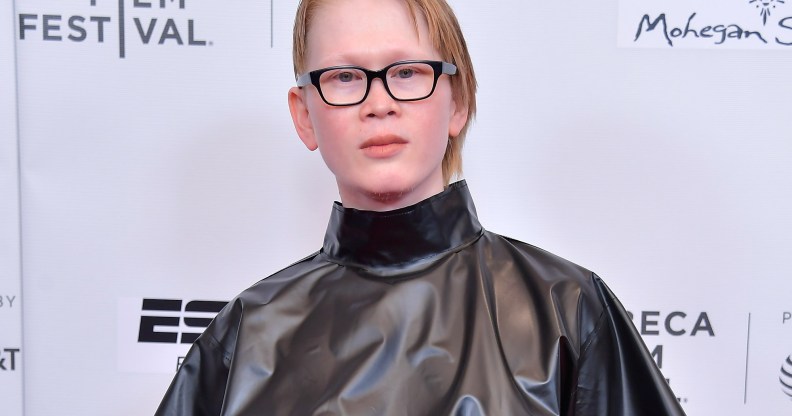‘There’s no one way to be a woman’ explains trans journalist who ditched make-up, dresses and heels to express her femininity

Meredith Talusan attends the premiere of “Call Her Ganda” during the 2018 Tribeca Film Festival at Cinepolis Chelsea on April 19, 2018 in New York City. (Roy Rochlin/Getty)
Journalist Meredith Talusan has described her journey to giving up makeup, dresses and heels and to realising that there is “no one way to be a trans woman”.
In an op-ed for the New York Times Talusan explained that traditional femininity became an “obsession” when she first transitioned in 2001.
She wrote: “I revelled in using cosmetics and flattering outfits to look both more convincing and attractive as a woman, forms of expression my old gender denied me.”
But, she said, the initial joy found in her new gender expression soon became less enjoyable.
“Apart from how much time it took to dress up this way, I also grew weary of the awful feeling that my beauty was always on the verge of collapse, that a mere rub of the eyes or bunching of the cloth would ruin the effect,” she continued.
“Also, the attention from men that at first felt intoxicating turned oppressive over time (especially when it came with the assumption that I wasn’t very smart).”
Meredith Talusan says she transitioned to express her gender on her own terms.
After five years of embracing herself as a trans woman, she began to use makeup less, and then “often no makeup at all, once estrogen had softened my features enough that I felt safe from people on the street calling me a man”.
She said she also replaced her “fussy dresses and high heels” to prioritise comfort in her clothing choices, but said the changes were so gradual that she hardly noticed them until a Harvard university reunion, where an old classmate told her: “You look the same.”
Talusan realised the comment was likely intended as a compliment in reference to her age, but it made her suddenly worry how others perceived her femininity.
But, on further reflection, she wrote: “When I began transitioning, I perceived the reality of womanhood only from outside and felt the need to embody an idealised femininity to feel like a woman among women.
But over time, I’ve come to realise that every woman — whether transgender or cisgender — evolves a unique perception of herself, one that need not conform to any specific model of what a woman should be.
“Whether I grow my hair or cut it short, wear makeup every day or none at all, it would be an expression of the specific woman I am at that point in time.
“Making those judgments for myself is at the core of why I transitioned to be a woman in the first place: to express my gender how I want to, regardless of society’s expectations.”
She realised, she wrote, that “my history did not conflict with the reality of my womanhood. I was a woman no matter how I looked or acted, because as long as gender matters to the world, I will always be a woman to myself”.
Talusen has just released her memoir, Fairest.

